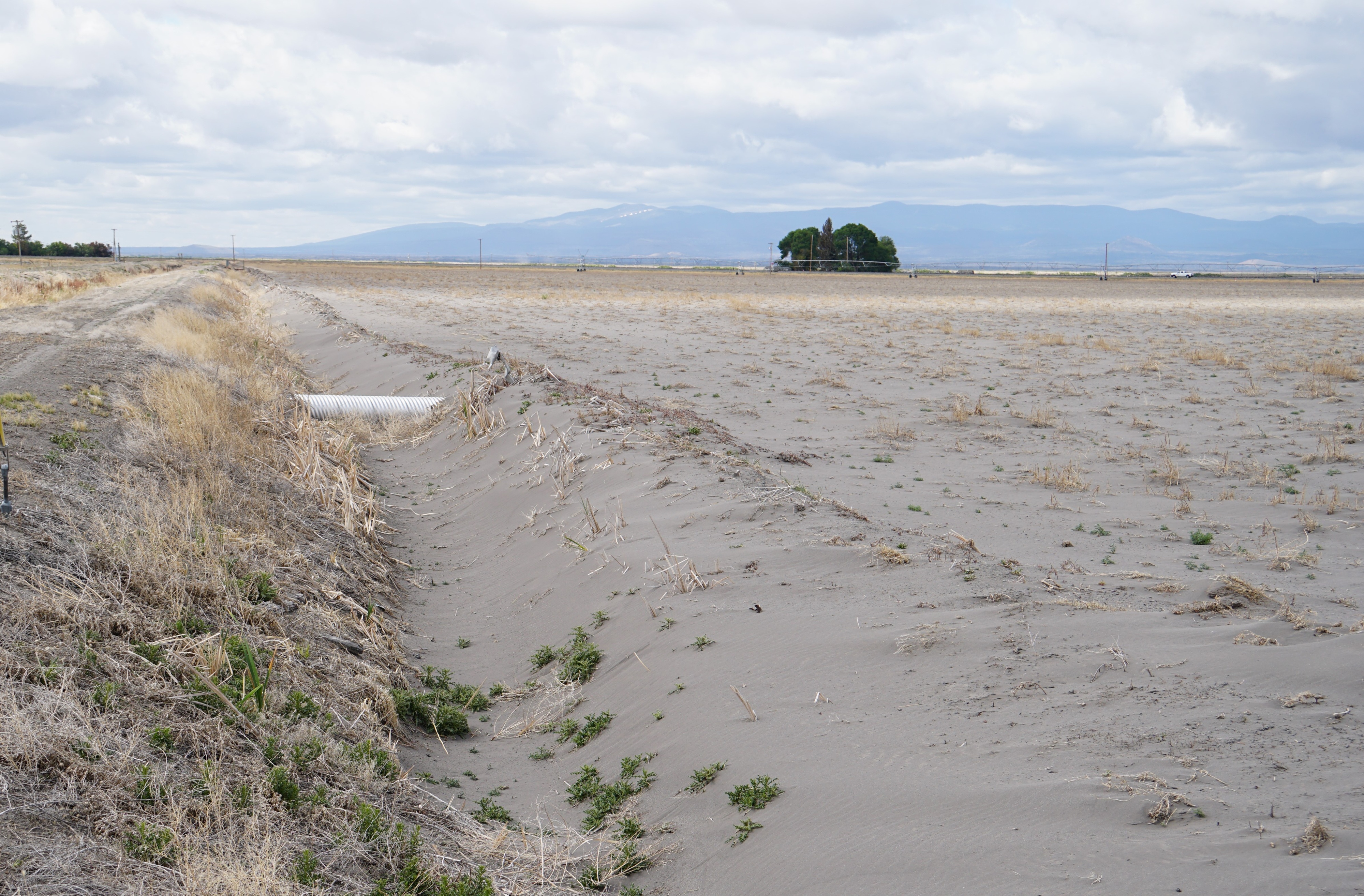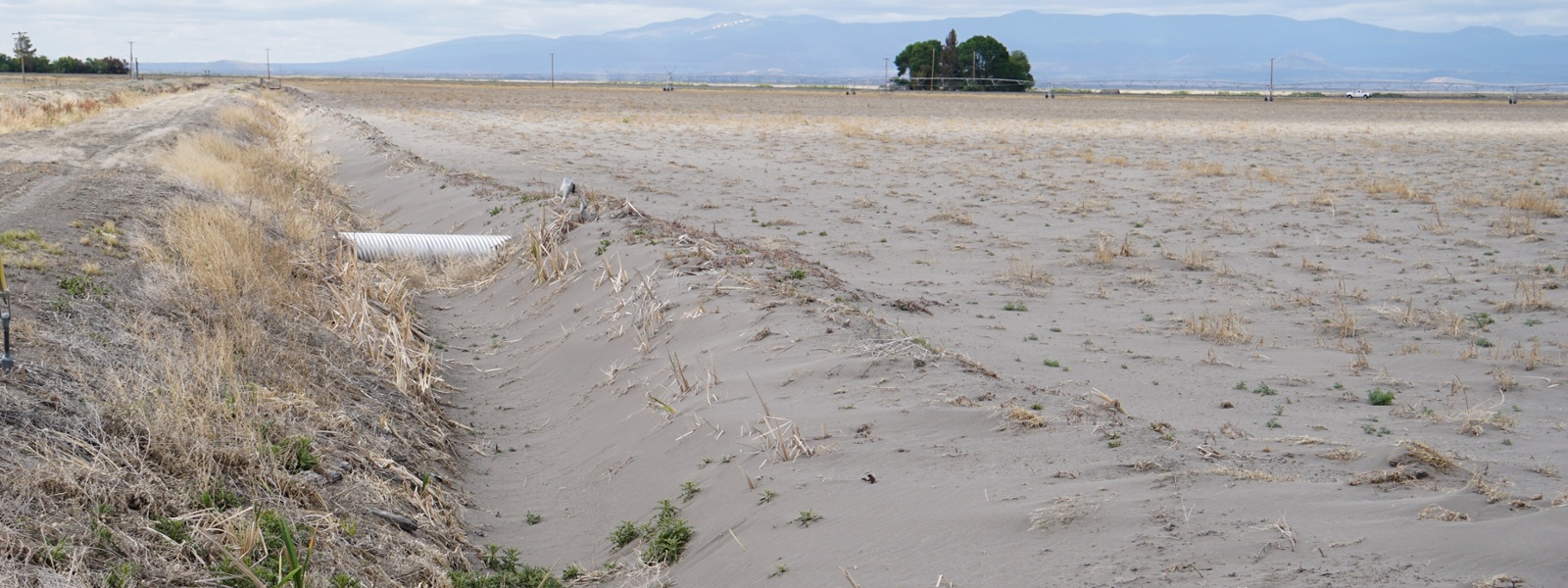Commentary: Despite deficit, state must invest to protect farming


Dust blows over an idled field in the Klamath Basin in 2022. Prime agricultural lands were fallowed statewide as California cut water deliveries, failed to deliver on infrastructure and explored new policies that could harm farm production.

By Christopher Reardon
As California lawmakers and Gov. Gavin Newsom embark on their annual budget dance, the state finds itself facing a projected $22.5 billion deficit. State budget watchers suggest the deficit will continue to climb before the annual budget revision process in May.
Only a year ago, California boasted a budget surplus of $100 billion. The Newsom administration had pots of money to distribute, with no worries about making painful budget cuts that could now affect a wide variety of services. Recently, the California Legislative Analyst Office reported, “The current economic environment poses a substantial risk to state revenues.”
It remains to be seen what things will look like as the budget process winds through the Legislature, but you can be sure there will be program cuts and projects put on hold—particularly if the deficit keeps growing. And yet, amid times of extreme competition for state resources, California must seriously consider new investments in infrastructure—starting with a 21st century water system constructed for the changing nature of our climate.
Historically, California has acted to protect its future, even during times of budget stress. But after three years of devastating drought, followed by a sudden deluge of storms, California can’t afford to hide and wait. We’re told that future weather patterns will most likely careen between atmospheric rivers and long, dry conditions. Our cities and critical agriculture sector need protections from both extremes.
Since 2021, Newsom and lawmakers have committed to spend nearly $8.7 billion on issues directly related to drought and flood control. Newsom’s budget proposal would cut that amount by $194 million. A separate budget cut would strip away $40 million in funding intended for flood-plain projects. Those projects would allow for rivers to flood in strategic places during winter storms or Sierra snowmelt, therefore reducing risks for downstream populations while also providing for beneficial ecosystems.
The good news is that Newsom administration officials now acknowledge that recent storms and flooding impacts have elevated policymakers’ understanding of the importance of flood investments. The hope here is that the governor and Legislature will reconsider and invest in and fast track groundwater recharge efforts, maximize stormwater capture, support reservoir repair and expansion and modernize water conveyance systems.
There are other considerations that need to be reviewed as we look at this year’s budget, starting with food security and ensuring healthy choices at affordable prices for all Californians. Food prices spiked by nearly 10% last year amid the highest inflationary surge in 40 years.
Yet California farmers continued to fallow large swaths of prime agricultural lands due to water shortages as California failed to deliver on needed infrastructure to manage its most precious resource. How do you explain that to rural farming communities facing uncertain futures with double-digit unemployment rates? In short, we must ensure that we can move water to support the people working to grow the food we all consume.
Additionally, we need to ensure tools for pest management continue to be safe, affordable and accessible to farmers. The Department of Pesticide Regulation has been engaging in discussions on increasing the mill assessment, a fee on the sale of all registered pesticides, without adequately explaining the need for including such an increase in the state budget. This seems to reflect a view that somehow California’s pesticide regulatory program doesn’t work. In fact, our state has the most comprehensive pesticide regulations in the world, including rigorous oversight by state and local agencies.
Finally, it seems that the economic impact of agriculture in this state is too often taken for granted. Our farmers and ranchers and agricultural businesses produced more than $55 billion in revenue in 2020. California agriculture employs more than 400,000 people and grows more than 400 commodity crops, producing more than one-third of U.S vegetables and two-thirds of America’s fruits and nuts. We are also the nation’s top dairy and wine producer, while exporting $22 billion in agricultural products around the world.
So, as you may imagine, agriculture has a lot at stake in the state budget process. California Farm Bureau’s government affairs team will be actively participating in discussions in Assembly and Senate budget subcommittees, in the May budget revise and subsequent budget conference committee sessions later this spring.
California has a long history of making historic investments during times of economic uncertainty, ever mindful of safeguarding our communities—urban and rural—for the years ahead. In this year’s challenging budget process, we must continue working to build needed infrastructure to protect our water resources so our farmers may grow the food and fiber to meet the demands of the future.
(Christopher Reardon is director of governmental affairs for the California Farm Bureau. He may be contacted at creardon@cfbf.com.)




